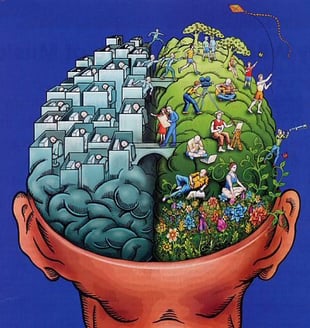Digital+Live Study Habits
Oct 15, 2010
Whenever we find ourselves thinking about marketing, we naturally progress into deep musings on neuroscience. It’s all connected, you see.
We recently read an interesting article about study habits in the New York Times. Turns out that much of the conventional wisdom we’ve come to rely on to guide students through the learning process isn’t all that wise. According to cognitive scientists, traditional study suggestions like “always study in the same, quiet place” or “focus on one subject at a time” really have no basis. In fact, research has led the scientists to the opposite conclusion. Students actually retained – learned – more of what they were studying by alternating their study environments instead of sticking to a single location.

The brain makes subtle associations between what it is studying and the background sensations it has at the time, the authors say, regardless of whether those perceptions are conscious. It colors the terms of the Versailles Treaty with the wasted fluorescent glow of the dorm study room, say; or the elements of the Marshall Plan with the jade-curtain shade of the willow tree in the backyard. Forcing the brain to make multiple associations with the same material may, in effect, give that information more neural scaffolding.
“What we think is happening here is that, when the outside context is varied, the information is enriched, and this slows down forgetting,” said Dr. Bjork, the senior author of the two-room experiment.
Same goes for studying distinct but related skills or concepts in one sitting, rather than focusing intensely on a single thing.
But… what does all that have to do with marketing? If you’re looking at the landscape with digital+live point of view, a lot. Marketing using a digital+live strategy, where consumers get to experience your brand in multiple environments, and perhaps through a few “distinct but related” campaign strategies, could mean better message retention. They come into contact with the same brand concept at your experiential event, on your signage, your microsite, your followup emails, and the like. And all that leads to better brand learning, so to speak. Not that we needed scientists to convince us that digital+live… works.
(You can find the full text of the NYT article here).



